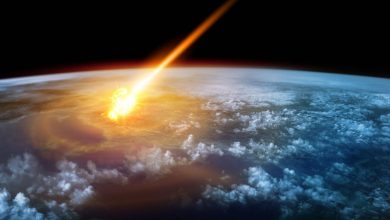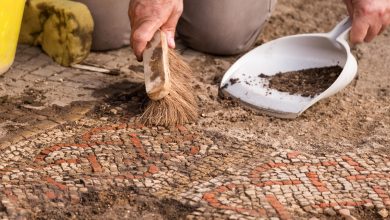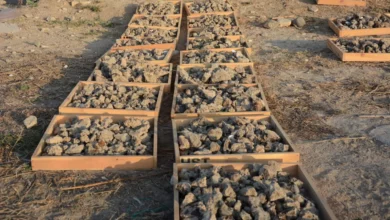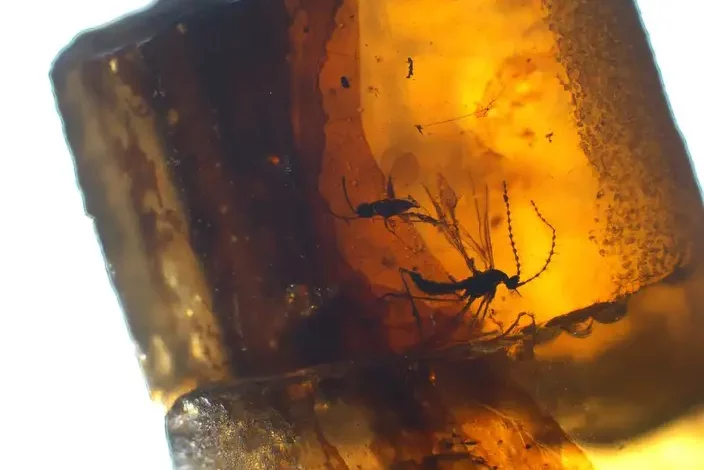
Lead Image: Insects preserved in an amber piece from El Soplao in Cantabria (Spain). Credit: Xavier Delclòs, UB-IRBio
New research delves into the enigma of the mass production of resin during the Cretaceous period, which led to the formation of amber. It emphasizes amber’s significance in understanding ancient ecosystems and their organisms, and suggests that widespread coniferous forests and specific environmental conditions contributed to this phenomenon. The study highlights the Cretaceous period’s importance in understanding today’s ecosystems and organisms’ evolutionary origins.
What would a traveler from the future think if one day s/he could analyze the rocks that are currently forming on the planet? Surely, this person would find quite a few plastic fragments and wonder why this material was so abundant in rocks of a certain age on Earth. This is the same question that geologists and paleontologists have asked themselves after many years of studying another material: amber, the fossilized resin from the Cretaceous that helps us reconstruct what the forests inhabited by dinosaurs were like.
We know the reason for the abundance of so many plastics in today’s ecosystems, “but we can only estimate the natural causes that would explain the production of large quantities of resin in the Cretaceous,” says Xavier Delclòs, professor at the Faculty of Earth Sciences of the University of Barcelona and first author of an article published in the journal Earth-Science Reviews that addresses this enigma of modern paleontology.
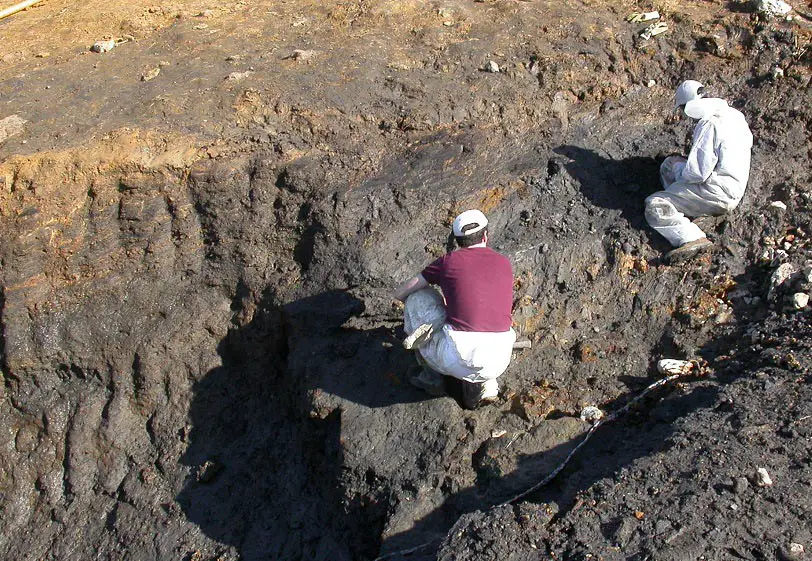
“The stories of plastic and fossil resins are very different, but they have one thing in common: the curiosity involved in observing that some new and relevant phenomenon arose at some point in Earth’s history and was recorded in rocks”, says Delclòs, member of the Department of Earth and Ocean Dynamics and the Biodiversity Research Institute (IRBio) of the UB.
“Amber, and in particular its abundance, would be of little interest were it not for the fact that it contains in its interior many organisms that inhabited the forests of the past, which have been perfectly preserved as fossils and which today allow us to know the forests of the Cretaceous with a detail that seems unreal sometimes” says Enrique Peñalver, a member of the Geological and Mining Institute of Spain, a national center of the Spanish National Research Council (CN IGME-CSIC) and also co-author of the study.
How were the large amber deposits formed?
The Cretaceous, a period extending from 145.5 to 66 million years ago, represents a time of rapid evolutionary change and diversification of organisms. Today, the dominant conditions that in the Cretaceous allowed the mass formation of abundant resin deposits all over the planet are not present, nor is it known why there was, at the time of the dinosaurs, such an extremely abundant production of resin.
“For about 54 million years, and for the first time in Earth’s history, there was a mass production of resin by plants, and we still don’t know why”, Delclòs and Peñalver point out. “Production quantities that could have formed fossil resin deposits of what we know today as amber had never been reached. From the Barremian to the Campanian, and thanks to the conditions existing on the planet, certain groups of conifers were able to originate large deposits of fossil resin that open a real window to the ecosystems of the past and today provide very important palaeobiological information. We have called this time span the Cretaceous Resinous Interval (CREI).”
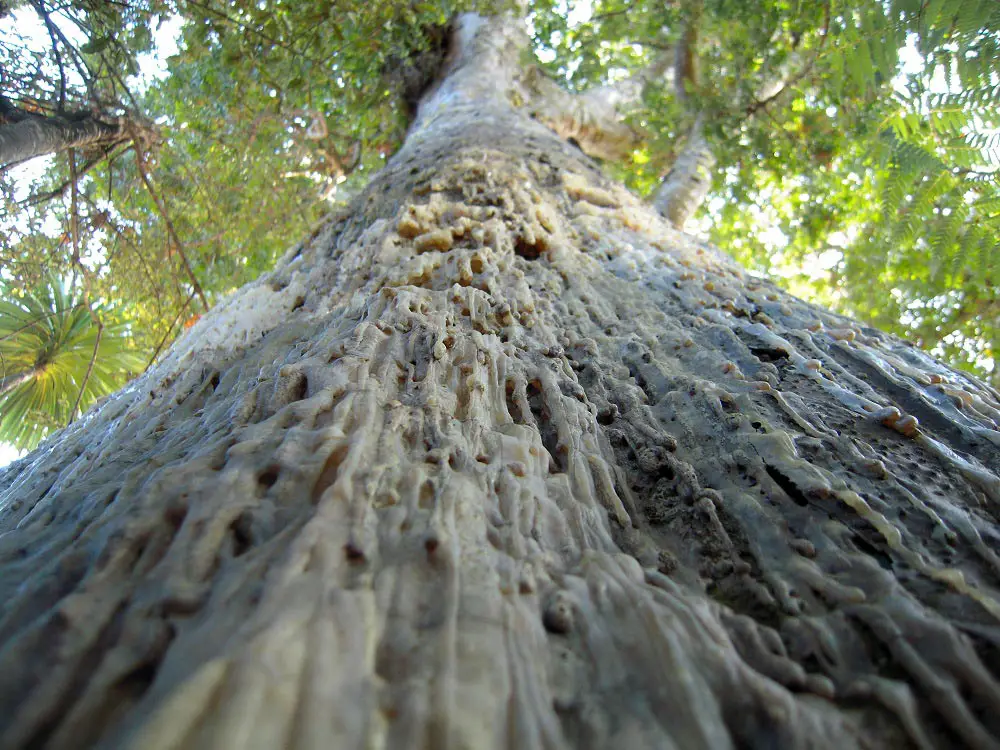
The formation of large amber deposits requires the existence of trees with the ability to produce a lot of resin. During the Cretaceous, only gymnosperms —e.g., conifers— which are evolutionarily older than flowering plants, could produce resin. Moreover, the resin had to be trapped in a sedimentary environment without oxygen to preserve it for millions of years. But what environmental or biological factors could have conditioned such resin production in the Cretaceous?
“Our study shows that, during the Cretaceous, coniferous forests were widely distributed across the planet. These amber deposits formed during the CREI shared these characteristics: high resin production exclusively by conifers; the presence of fusain, a material derived from plant material burnt by forest fires; fossils preserved in amber that correspond to similar fauna and flora among different deposits; and resin accumulation in transitional sedimentary environments under subtropical and temperate paleoclimates that coincide with the onset of sea-level rise stages.
The study also indicates that the mass production of resin was not continuous during the CREI nor was it equal everywhere: there were times of higher and lower production. In the study, carried out by a large multidisciplinary group of experts, the participation of Ricardo Pérez de la Fuente, from the Oxford University Museum (United Kingdom), is particularly noteworthy.
An open window to the vanished world of the Cretaceous
Pieces of amber recovered by paleontologists in different sites around the world provide new insights into the Cretaceous. This period saw the emergence of large terrestrial ecosystems dominated by angiosperms — flowering plants — and many of the evolutionary lines of present-day organisms. The distribution of continents and ocean currents was altered, the climate was warmer and more humid than today’s, and sea levels rose more than 200 meters above today’s coastlines.
“In the atmosphere, there were high levels of carbon dioxide (CO2) due to intense volcanism, but also of oxygen (O2) due to the great extension of forests to latitudes now covered by ice, a feature that also enhances large-scale fires,” Delclòs and Peñalver note.
This is the global landscape and environment that dominated the Earth during much of the Cretaceous. The environmental factors conditioned the life and evolution of the organisms that existed on the planet, especially the terrestrial ones, from the smallest to the great dinosaurs, and the relationships between the different species.
In this scenario, the CREI emerges as a global phenomenon, with amber outcrops distributed everywhere during the Cretaceous, and concentrated especially in Laurasia and the northern margin of Gondwana. Environmental factors may have affected on a global scale, while biological factors — interaction between plants and arthropods, etc. — may have acted on a regional scale.
“CREI represents a great window to a vanished world, at the beginnings of modern ecosystems dominated by flowering plants, where dinosaurs lived, and where the lineages of the first birds and mammals evolved. Studying this period allows us to obtain many data of maximum scientific interest on phylogenetic relationships, extinct organisms, the beginning of behaviors that we can recognize today in many groups, intra- and interspecific relationships of extinct organisms (parasitism, pollination, parental care, swarming, forestry, reproduction, etc.) of the inhabitants of a terrestrial environment —the forest— that are not usually fossilized,” the experts conclude.
Reference: “Amber and the Cretaceous Resinous Interval” by Xavier Delclòs, Enrique Peñalver, Eduardo Barrón, David Peris, David A. Grimaldi, Michael Holz, Conrad C. Labandeira, Erin E. Saupe, Christopher R. Scotese, Mónica M. Solórzano-Kraemer, Sergio Álvarez-Parra, Antonio Arillo, Dany Azar, Edwin A. Cadena, Jacopo Dal Corso, Jiří Kvaček, Antonio Monleón-Getino, André Nel, Daniel Peyrot, Carlos A. Bueno-Cebollada, Alejandro Gallardo, Beatriz González-Fernández, Marta Goula, Carlos Jaramillo, Iwona Kania-Kłosok, Rafael López-Del Valle, Rafael P. Lozano, Nieves Meléndez, César Menor-Salván, Constanza Peña-Kairath, Vincent Perricho, Ana Rodrigo, Alba Sánchez-García, Maxime Santer, Víctor Sarto i Monteys, Dieter Uhl, José Luis Viejo and Ricardo Pérez-de la Fuente, 25 June 2023, Earth-Science Reviews.
DOI: 10.1016/j.earscirev.2023.104486

